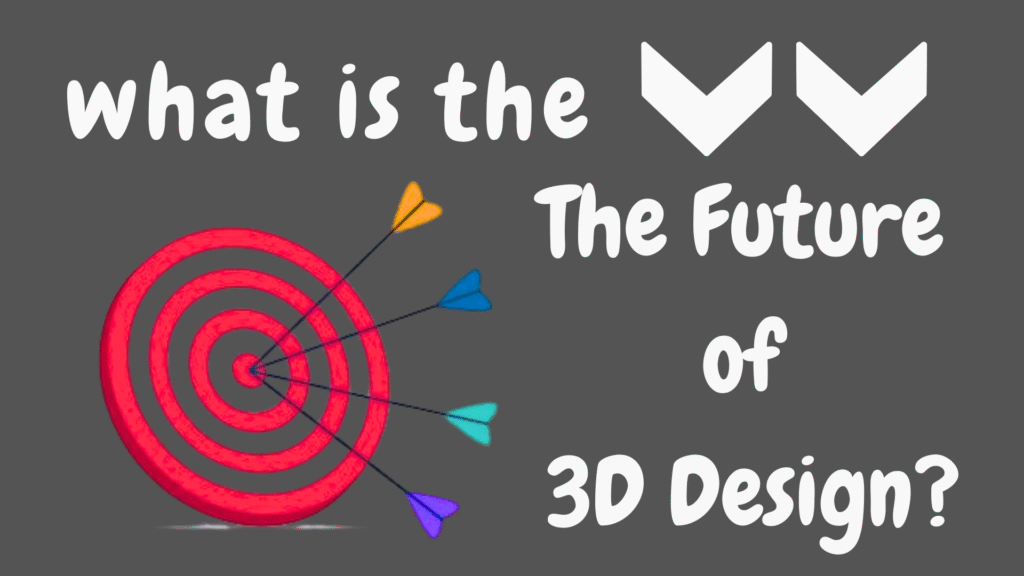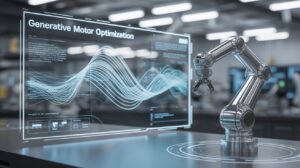3D design is the process of designing three-dimensional objects and spaces with the help of software, bringing concepts into digital form that can be seen and experienced in real-time. 3D design has changed many industries to enable better and more accurate representations.
For video games, 3D design produces realistic environments, characters, and landscapes to make the experience more engaging for players. For architecture, it facilitates accurate model making and virtual walkthroughs, enhancing design visualization and client presentations. In medicine, 3D design supports medical imaging, prosthetics, and surgical planning, allowing treatments to be more customized and effective.

Emerging Trends in 3D Design (2025 and Beyond)
* AI Integration in 3D Design
* How AI is assisting designers in automating tasks, enhancing creativity, and improving efficiency.
Streamlining Repetitive Tasks: AI software is able to complete labor- intensive activities such as creating textures, lighting adjustments, or model optimizations, leaving the designer to address more intricate features. This shortens the volume of tasks and speeds up the entire design process.
Improving Creativity: AI-powered tools, like generative design software, propose novel design concepts that are not necessarily apparent to human designers. AI provides various design options that allow artists to experiment with new possibilities and extend the limits of conventional design.
Increased Efficiency: AI assists in making workflows more efficient by accelerating processes such as rendering and asset creation. For example, machine learning algorithms can forecast design results, sharpen models, and even aid in real-time rendering, even cutting the time required to finish projects by half.
Key Trends To Watch in 2025
1. AI-Driven 3D Design: How artificial intelligence will streamline processes and elevate creative workflows.
2.Real-time Rendering: Improvements in quicker rendering, e.g., with Unreal Engine and other video game engines.
3.Metaverse Integration: The increasing need for 3D design within virtual worlds and immersive settings.
4.Generative Design: The effect of generative algorithms on the generation of intricate and optimized 3D models.
5.Sustainability: The place of environment-friendly 3D design, such as biodegradable materials and energy-saving techniques.
6.Customization: Design and 3D printing solutions for deeply custom products.
The Impact of AI and Machine Learning
1. Automatic 3D Object Generation
AI-Based Modeling: AI tools can generate 3D objects based on simple input parameters, like shape, size, and style preferences. For example, AI-powered design tools like Runway ML or Artbreeder
Generative Design: Using AI algorithms, generative design software can propose thousands of iterations of a 3D object based on constraints set by the designer (e.g., weight, material, or strength).
2. Predictive Rendering
Faster Rendering with AI: Traditional rendering can take a long time, especially for complex 3D scenes. AI accelerates this by predicting how light, texture, and material will interact in the scene, reducing the time required to produce high-quality images.
Error Detection and Optimization: AI can detect inconsistencies or errors in a scene, like missing textures or lighting issues, and make automatic adjustments.
3. AI-Enhanced Design Suggestions
Smart Recommendations: AI tools can analyze a designer’s style or previous projects and recommend design elements or modifications. These suggestions can range from color schemes and textures to entire 3D structures or animations.
Contextual Design Feedback: AI can evaluate designs based on industry trends, user preferences, or performance requirements
4. AI-Driven Animation and Rigging
Automated Rigging: AI tools like Deep Motion and Cascadeur can automatically rig 3D models and animate them based on minimal input.
Realistic Movement: AI can predict how objects or characters will move and interact with their surroundings.
5. AI-Powered Personalization
Tailored Design: In the realm of consumer products, AI is helping designers create more personalized 3D designs. AI can learn a customer’s preferences and help create custom 3D-printed products, like jewellery or home decor.
Interactive Design Experiences: In industries like gaming and virtual reality, AI can adapt 3D environments based on user interactions
Challenges facing 3D Designs in 2025
1. Technical Barriers
Hardware Limitations: The demand for higher-quality, more complex 3D designs requires robust hardware, especially when rendering large, detailed scenes or using real-time VR/AR.
Resolution and Detail: As 3D models get more complex and detailed, maintaining high resolution without significantly increasing file sizes becomes a challenge
2. Creative Limitations and Ethical Considerations in AI-Driven Design
Over-reliance on AI: While AI can help automate and enhance the design process, there’s a risk that designers could become overly dependent on AI tools, potentially stifling creativity.
Loss of Human Touch: AI-generated designs, especially when creating assets or models at scale, may lack the subtleties and emotions that come from human creativity
3. Sustainability and the Use of Eco-Friendly Materials in Design
Material Sustainability: As the demand for 3D printing grows, so does the need for sustainable materials. Currently, many 3D printing materials (like certain plastics) are not eco-friendly.
Energy Consumption: Rendering high-quality 3D designs, especially in real-time or AI-assisted environments, requires significant computational resources, which in turn consume large amounts of energy.
In Conclusion, the future of 3D design in 2025 is full of immense potential, driven by technological advancements such as AI, real-time rendering, and AI-powered tools. These innovations promise to automate repetitive tasks, enhance creativity, and make the design process faster and more efficient. However, challenges like hardware limitations, AI ethics, and sustainability will require designers to navigate carefully. Balancing creativity with technology, maintaining human touch, and adopting eco-friendly practices will be crucial for the industry’s growth.
Ultimately, 3D designers will need to adapt to these evolving trends while staying mindful of the ethical and environmental impact of their work. By embracing innovation and overcoming these challenges, 3D designers can shape a future that is not only efficient and cutting-edge but also creative, inclusive, and sustainable.

